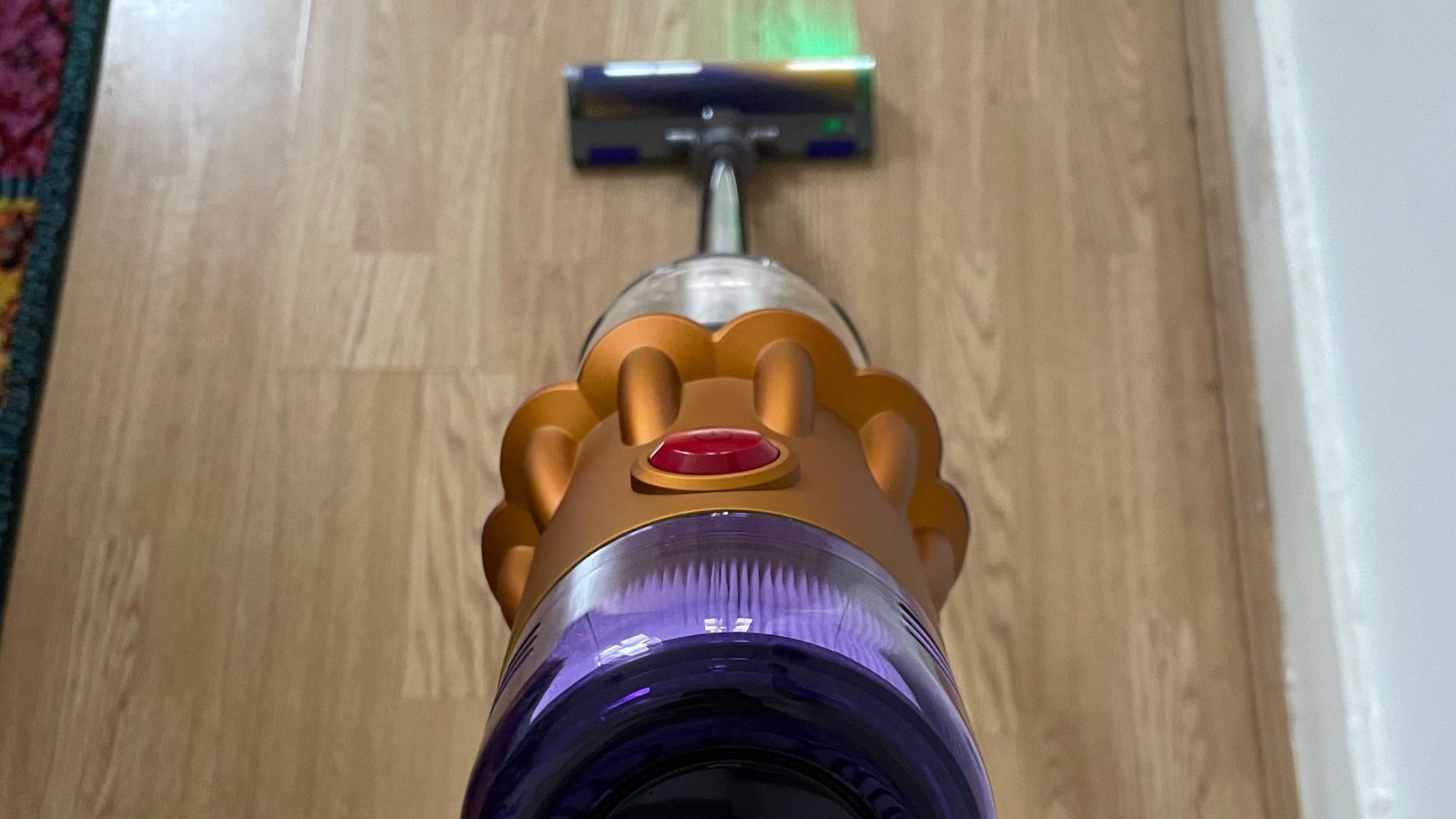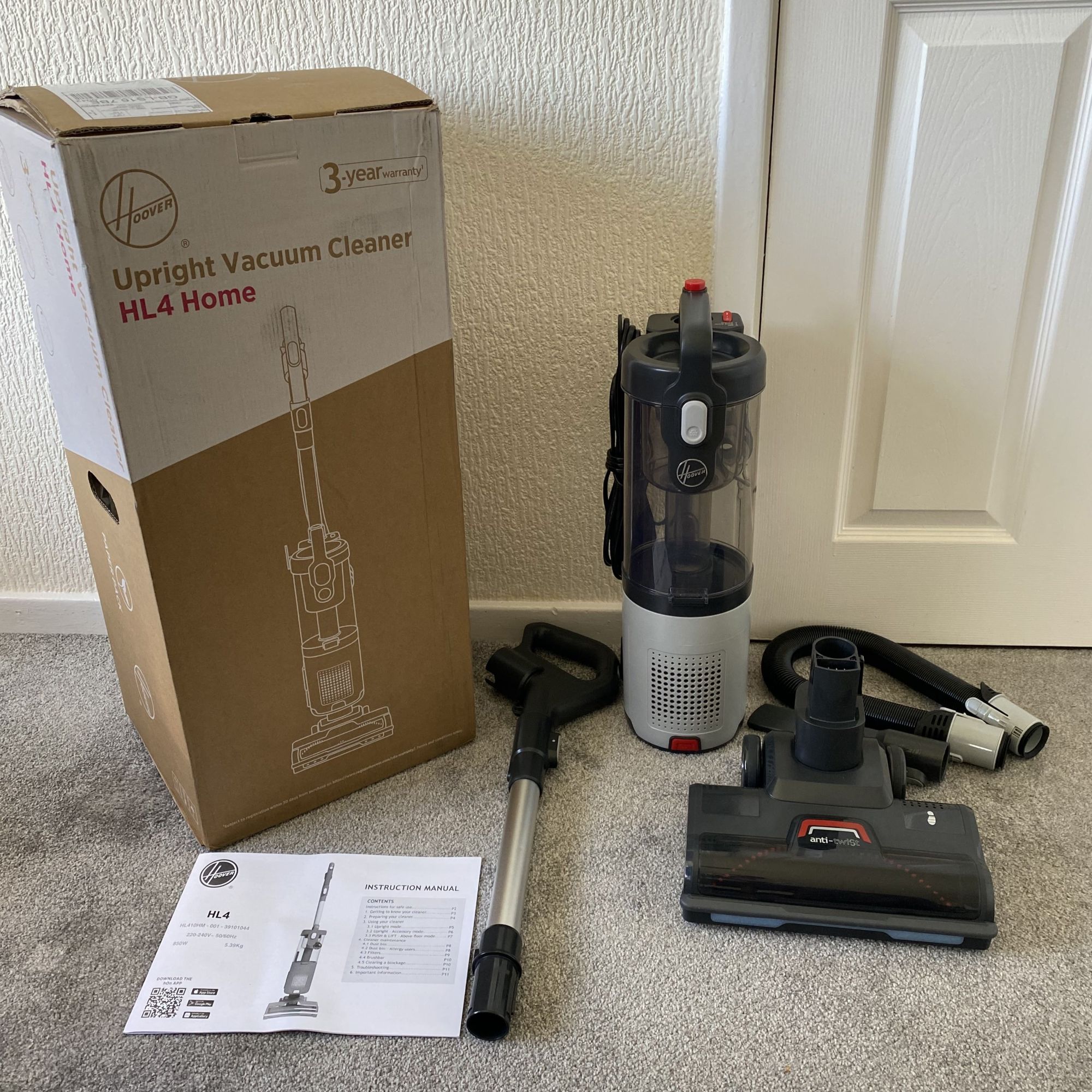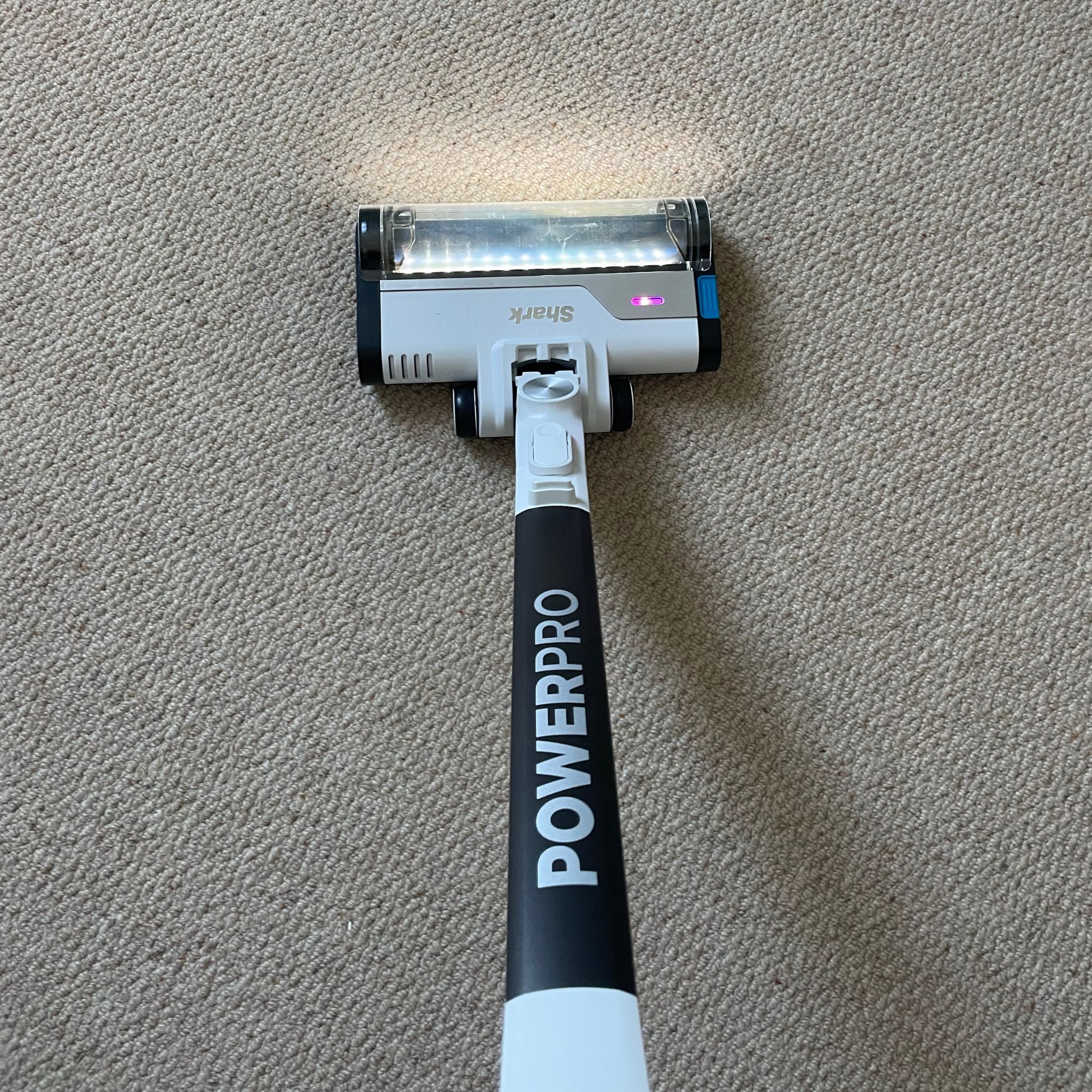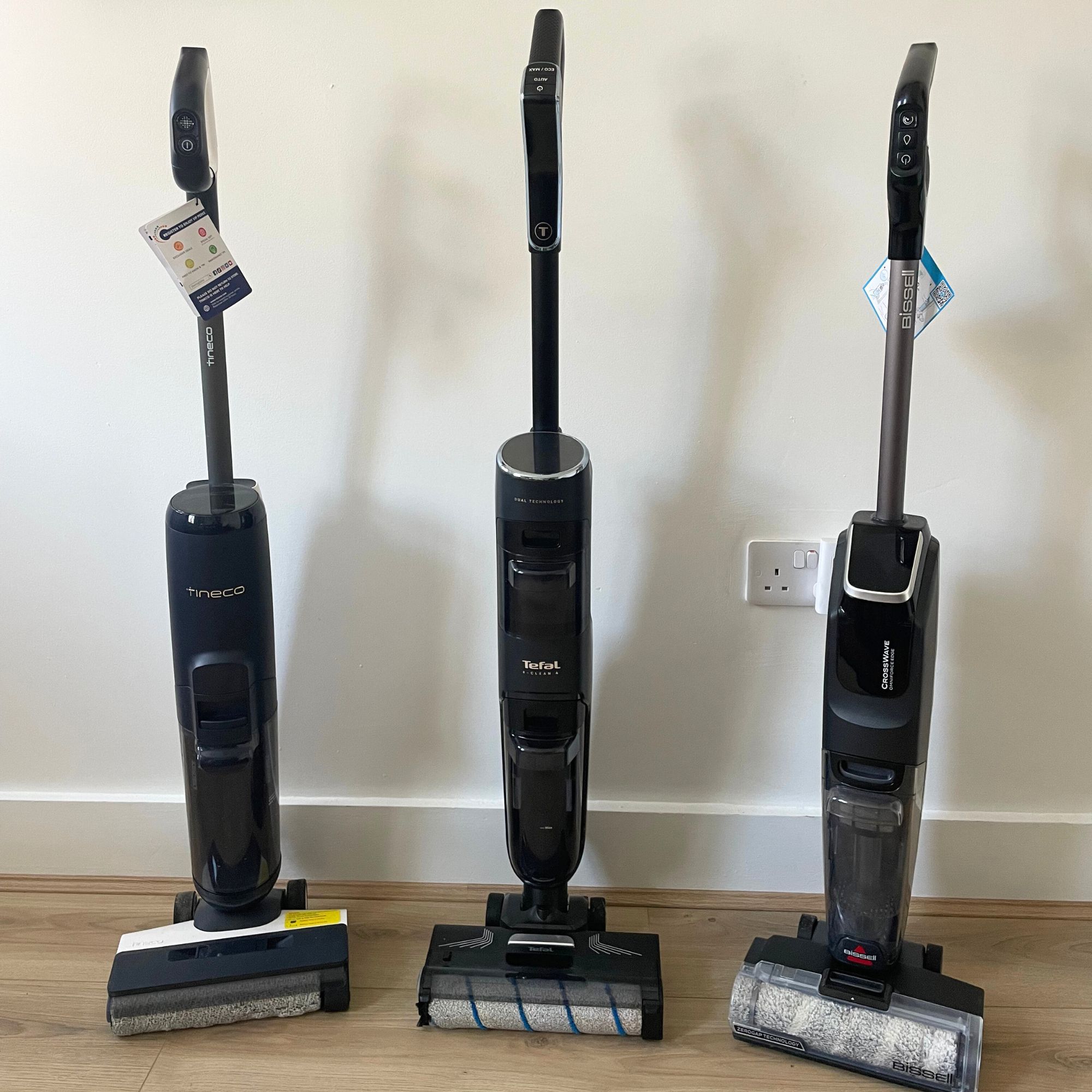How we test vacuum cleaners at Ideal Home
We review every vacuum cleaner we recommend to readers in real homes. This is how we do it


Always wondered how we test vacuum cleaners at Ideal Home? Well, as the team’s Certified Expert in Vacuums and resident floorcare expert, I’ve got you covered.
Personally, I’ve spent almost 300 hours testing vacuums in my home - and that doesn’t include the countless hours my dedicated team of reviewers has spent testing vacuums from big brands such as Shark, Dyson, Hoover, Henry, and more. My top-rated models are then compiled in my best vacuums guide.
I’ve also created dedicated guides for the best cordless vacuums and even the best robot vacuums. And every single one of them has gone through a dedicated two-week (and often longer) testing process to stake its claim in these guides, so I can be sure I’m only recommending vacuums that are worth the investment.
How we test vacuum cleaners at Ideal Home
The Ideal Home team takes how we test products extremely seriously, which is why we’ve developed a rigorous vacuum cleaner testing process that ultimately helps us give each vacuum a score out of 5 stars. I’ve broken down everything we assess during vacuum testing below.
How we test the unboxing and setting up process
Before we even start using the vacuum cleaners we test in our homes, we assess the packaging and set-up process. We look at how it's packaged, the state it arrives in, how easy it is to manoeuvre and unbox, whether all the packaging is necessary and whether it is recyclable (which is really important to us here at Ideal Home).

We also time how long it takes from opening the box to actually using the vacuum, and assess how easy it is to put together. A quick and easy assembly will score highly as it offers customers a grab-and-go experience that most of us are after. A vacuum cleaner that requires a lot of assembly and is complicated to set up won’t score as highly.
How we test debris pickup
Knowing how to vacuum relies on having an efficient and effective vacuum cleaner, and one that picks up all kinds of debris from your floors. Because of this, we start each vacuum cleaner testing session by testing its pickup power. We conduct these tests on both hard flooring and carpets, and use a variety of different-sized debris, including:
Sign up to our newsletter for style inspiration, real homes, project and garden advice and shopping know-how
- Flour
- Crushed cereal
- Coffee grounds
- Real pet hair (for the best pet hair vacuums)
Each of these tests allows us to see how the vacuum stacks up against different claims the manufacturer makes, such as hair repelling designs and the ability to deal with large amounts of debris.
After all, a high-quality vacuum with an impressive suction power and floorhead should be able to pick up all kinds of debris in one or two passes. If it takes more than that, it’ll be marked down.
Using coffee grounds also allows us to test any anti-odour properties a vacuum cleaner has, given the strong and distinctive scent.
How we test general performance
After performing the specific debris tests, all of our vacuum reviewers then use the test model as the main vacuum cleaner in their home for the next two weeks. They use it during everyday scenarios, to mimic the average customer usage.
When it comes to measuring ease of use, we look at how much the vacuum weighs and determine how easy it is to move around on flat surfaces and stairs. We also look at whether it can stand up unaided without toppling over, or whether it needs to be rested against something or laid down flat.
We also track whether the vacuum is equipped with anti-odour technology, anti-allergen filters or anti-hair wrap features, which helps us provide suitable comparisons at different price points. This means we can be more effective in giving you all the information you need to choose the right vacuum - without having to spend hours searching yourself.

In the case of cordless vacuum cleaner, we also measure how long a full battery charge lasts in each the various power modes and how long it takes to recharge once the battery runs out.
We collect this data ourselves and assess whether this is true to the manufacturer's specification. We also pay special attention to how convenient the charging process is, and how easy the vacuums are to store.
For all vacuums, we also use a decibel meter app to measure how loud it is, which is crucial for homes where there are people or pets with particular noise sensitivity.
To test anti-allergen properties, we use an air quality monitor, with readings taken at multiple points to assess effectiveness.
How we test the attachments
Next, we look at the attachments provided with the vacuum (if provided). We not only look at the range of attachments included with the vacuum cleaner, but also how easy they are to interchange and store. In addition, we determine how necessary the attachments are, and how often the average household would be them.
We use every single attachment to test its effectiveness, and also use specific attachments for certain scored tests.

How we test the cleaning and maintenance required
When we test the best vacuum cleaners at Ideal Home, we also pay special attention when emptying the vacuum. For bagless model, we assess whether it can be done one-handed and whether it's messy or not (after all, nobody wants a cloud of dust hitting them in the face), and for bagged models we assess how long it takes for the bag to fill up and how much they cost to replace.
We also track the size of the dustbin to allow for effective comparison between models, and assess any other cleaning or maintenance required for the vacuum cleaner. This includes how often the filter needs to be cleaned or replaced, and any other necessary information.

How we test robot vacuums
Our process for testing robot vacuums is very similar to how we test standard vacuum cleaners, with a few variations thanks to new and emerging technology, and the fact that the robot is doing most of the work!
Our unboxing process is a little longer where robot vacuums are concerned, as these devices need a little more time to acclimatise to their new homes.
Once we've connected each robot we test to its corresponding app, we set it off to map the area it's going to be cleaning and evaluate how easy it is to get going and set into a routine.
We then perform the same dry debris test as we do with regular vacuums, but in the case of a robot vacuum with mop, we also use wet debris such as tomato sauce and milk and cereal to see how well it fares.

In addition to this, we also perform the obstacle test to ascertain a robot vacuum’s obstacle avoidance. We put large objects in the path of the robot vacuum and observe how well it avoids them. For more advanced models with AI technology, you’d expect the robot vacuum to spot the obstacle before it hits it and then swerve around it.
For less technologically-advanced models, it’s likely that the robot vacuum’s bumper bar will hit the obstacle. This will undoubtedly lead to a lower score.
If the robot vacuum has a docking station, we also assess how big it is, the features it offers, how long it takes to fill up and whether the advertised charge and run times match the manufacturer’s claims.
These robot devices can be seriously expensive as well as being very useful, so in each review we make sure to interrogate what you'll really be getting for your money, and whether you can truly put your feet up and let your new robot vac get on with the cleaning instead.
How we test vacuum mops
The best vacuum mops are a new addition to the vacuum world, and are growing hugely in popularity. Often called hard floor cleaners, they offer wet and dry cleaning solely on hard floors - although some models can dry vacuum area rugs.
To test these models, myself and the Ideal Home team reviewers use it for two weeks on the hard flooring in our homes, using it for everyday cleaning and for specific debris tests. This includes throwing tomato sauce, cereal and milk on the floor.
We also assess the size of the clean and dirty water tanks, how manrouvrable they are, their run time, and how easy they are to clean. After all, vacuum mops can be messy, and we want them to be as fuss-free as possible.

Our Certified Experts
The Ideal Home Certified Expert programme is a long-term commitment to achieving the best product expertise on a range of topic areas, so you can be certain our editors know their stuff when it comes to the products they recommend in our buying guides.
Becoming a Certified Expert involves meeting several strict criteria:
- Hands-on testing experience
- In-depth product knowledge
- Insider experience
- Consumer intel
Our reviewers

Lauren is our Certified Expert in Vacuums and our expert for all things floorcare. She's spent almost 300 hours testing dozens of vacuums, and as a dog mum, she is especially skilled at putting each through a rigorous test to see how well it tackles pet hair.

Katie is a regular freelance reviewer for Ideal Home, and has put dozens of products through their paces. She is one of our go-to reviewers for vacuum cleaners and loves putting them to the test in her home in Leeds.

Molly might be Ideal Home's Certified Expert for appliances, but she also spent countless hours over two years reviewing and writing about vacuum cleaners over her years with the brand.
She regularly visits the Future Test Facility in Reading to put products through their paces.
Our vacuum cleaner reviews
Below you can find a selection of our vacuum cleaner reviews and see our testing process in action, with images and video in each review from out test centre and our homes.
- Dyson V16 Piston Animal cordless vacuum review
- Shark Stratos cordless vacuum review
- Henry Xtra vacuum cleaner review
- Shark PowerDetect Clean & Empty cordless vacuum cleaner review
- BISSELL CrossWave OmniForce Edge vacuum mop review
- Eufy Robot Vacuum Omni E25 review
You'll find full details of the Ideal Home review process on our how we test page, including how we put mattresses, air fryers, BBQs, pizza ovens, and a whole host more products through their paces to bring you our top recommendations.

Lauren Bradbury has been the Content Editor for the House Manual section since January 2025 but worked with the team as a freelancer for a year and a half before that. She graduated with a Bachelor’s degree in English and Creative Writing from the University of Chichester in 2016. Then, she dipped her toe into the world of content writing, primarily focusing on home content. After years of agency work, she decided to take the plunge and become a full-time freelancer for online publications, including Real Homes and Ideal Home, before taking on this permanent role. Now, she spends her days searching for the best decluttering and cleaning hacks and creating handy how-to guides for homeowners and renters alike, as well as testing vacuums as part of her role as the Ideal Home Certified Expert in Training on Vacuums, having spent over 110 hours testing different vacuum models to date!